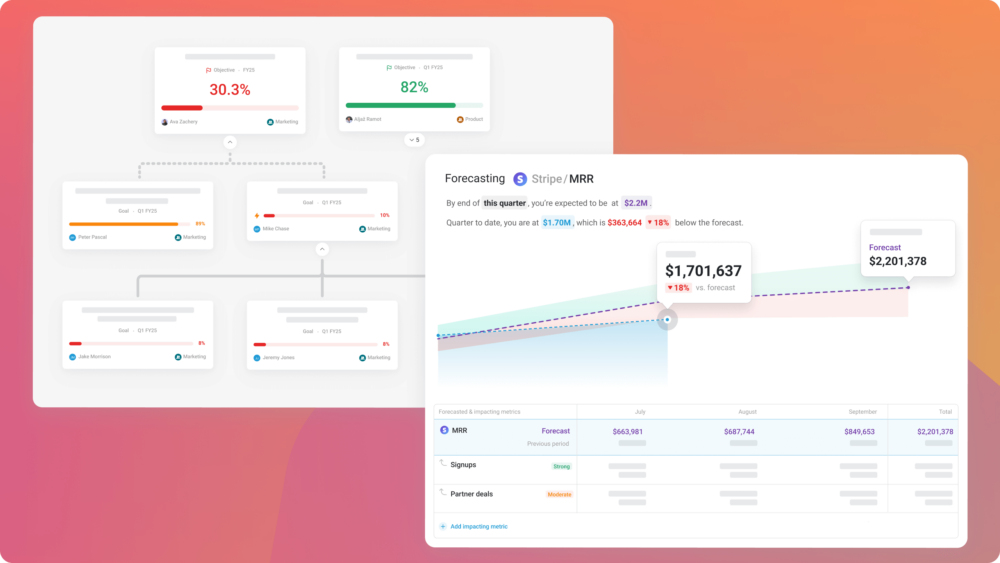Table of contents
In this edition
- 📊 Facebook Ad benchmarks for B2B
- 💡 Improving Facebook Ad return on ad spend (ROAS)
- 📈 Attract (and convert) more of your best customers
📊 Featured Benchmark Data (from Benchmark Groups)
Facebook Ad Benchmarks for B2B
Median performance in August 2023:
- Frequency: 2.61
- Reach: 131k
- Clicks: 4k
- CPC $0.43
- CTR: 1.5%
- CPM: $7.24
Join this group to see more insights, where you’re ahead, and where you can improve.
💡 Trends & Insights (from Reports & Surveys)
Improving Facebook Ad return on ad spend (ROAS)
Return on ad spend (ROAS) is like a North Star metric for your paid programs. It tells you the thing your leadership team or clients want to know most: how much money you’re making for every dollar you spend on ads. It’s one of the most crucial numbers to track to estimate your paid program’s return on investment (ROI). Ultimately, it’s this metric you want to be focused on improving, rather than leading indicators of ad success like click-through rate or cost of impressions.
We recently conducted a survey of 38 companies to get insights on optimizing and improving Facebook Ad ROAS. About 30% have been using Facebook Ads for 1-3 years, and 42% have been using them for 3-5+ years.
Here are some of the insights:
- The majority (80%) felt the ROAS goal SMBs should strive for is at least 3x
- Median ROAs were 1.6 for SMBs and 1.79 for B2B
- When planning ad campaigns, our respondents prioritized Engagement (how people interacted with the ads) or Conversion rate (how often ad interactions led to a purchase) the most (27.03% of the respondents voted for each). The ROAS goal is the third most important thing they focus on in a campaign.
- When analyzing our benchmark data, the only group with ROAS that breaks the 2.0 ceiling is eCommerce
Check out the full article to read qualitative insights and recommendations on improving your ROAS.
📈 Drive Predictable Performance (from Metrics & Chill)
How to attract more of your best customer
There’s a huge area of opportunity that most companies have, but don’t leverage: finding out who your best customers are, and overhauling your go-to-market messaging and positioning to attract more of them.
Mary Keough came on the podcast and shared exactly how to do it. Here’s a quick summary if you don’t want to listen to the full episode.
Chances are, you’re winning somewhere. Out of everyone who’s used your service or tried your product, a niche cohort *really* loves it. They retain the longest, churn the least, pay the most, and happily refer others.
The trick is finding who these people are and why they chose you, then distilling those insights and communicating them in your messaging so you can attract more of your future best customers: the people who share the same pains as these existing customers, and value the same things they do.
Mary starts with quantitative research, narrowing down to customers who have historically been the “best”. For you, this might be customers who meet any of the following:
– Upgrade to a paid or higher-tiered plan
– Retain more than x months
– Utilize a higher % of features
– Give a higher NPS score
– Or any other quantitative data that indicates they’re a great fit
Once she’s filtered down to the “best”, she looks for firmographic/quantitative trends. Things like:
– Company size
– Revenue amount
– Industry
– Job title
For example, you may find that most of your best customers are from a specific industry, are below a certain size, use a certain suite of tools, are used by 1 or 2 job titles, or have hit a certain level of revenue.
From there, she tries to find out what pain they came to solve, and why they chose her company. Usually, this comes from listening to support calls, sales calls, or conducting 1 on 1 interviews with a handful of customers.
The goal is to unearth qualitative insights like the differentiation customers saw and valued, why they chose you over competitors, what specific problems they use your problem to solve, etc.
From here, distills all the insights together in a positioning statement (using April Dunford’s positioning framework) that details who the target customer is, the pains they’re coming to solve, the features the company offers, and the benefits those features bring to the customer.
From here, she can improve GTM messaging on the website, ad copy, emails, and elsewhere, to attract more of these best customers. The reason this is so effective is that she’s reflecting the customer’s language back at prospects.
Instead of describing potential pains you think you solve, or describing why *you* think you’re different/better than competitors, you’re describing the pains you solve or differentiation according to your best customers.
As a result, your messaging, offer, differentiation, and features are communicated in a much more relevant, compelling way to prospects who are likely to value the same things your best customers do.
If you want to hear all of Mary’s insights, or how to do this process at your own company step by step, give the interview a listen…
Drive predictable growth
Join “Move The Needle” and get issues like this delivered to your inbox. Each issue we share tactics, strategies and ideas from B2B leaders on how to drive consistent, predictable growth at your company.












